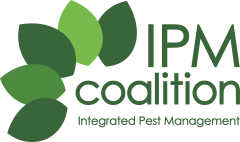The Producer has a plan to phase out by 2024 pesticides listed in category 2 of the Globally Harmonized System of Classification and Labelling of…
Coalition status
BCI Phase out by 2024
Fairtrade Red
This list contains 207 pesticides. The list is valid as of January 2018.
Prohibited pesticides that must not be used on Fairtrade products under any…
FSC highly restricted HHPsChemical pesticide presenting two or three out of the following hazards: acute toxicity, chronic toxicity and environmental toxicity.
GCP ProhibitedPesticides in the Prohibited List are not used.
This includes pesticides that are:
Listed under the Stockholm Convention, Rotterdam Convention or…
Rainforest Risk MitigationSAN Risk MitigationThe SAN List of Pesticides for Use with Risk Mitigation is a product of U.S.A. public funding and the intellectual property of the analysis process…
UEBT Risk MitigationThe use of the Risk Mitigation Agrochemicals is discouraged as they are known to bear significant human health and environmental risks. Where these…
UTZ Prohibited, UTZ WatchlistA pesticide all uses of which have been prohibited by final regulatory action, in order to protect human health or the environment., UTZ Watchlist is composed of active ingredients that are not banned but that have a potentially severe and/or cumulative risk for human health and/or…
Details
Type:
Use: Acaricide, Insecticide
Example applications: Fruit trees including citrus, apples, apricots;Currants;Vines;Nuts;Ornamentals
Example pests controlled: Spidermites, Aphids, Mealybugs, Thrips, Whitefiles, Scale
Mode of action: Selective, non-systemic with contact and stomach action, acts by inhibiting oxidative phosphorylation. Inhibitor of mitochondrial ATP synthase.
Source: PPDB
Toxicty
Identifiers
Cas-RN: 13356-08-6
Beilstein: 4097400
Chebi: 39294
CiPac: 359
EC: 236-407-7
PubChem: 16683004
US EPA: 104601
GHS safety labels
About Globally Harmonized System of Classification and Labelling of Chemicals (GHS)
From Wikipedia: The Globally Harmonized System of Classification and Labelling of Chemicals (GHS) is an internationally agreed-upon standard managed by the United Nations that was set up to replace the assortment of hazardous material classification and labelling schemes previously used around the world. Core elements of the GHS include standardized hazard testing criteria, universal warning pictograms, and harmonized safety data sheets which provide users of dangerous goods with a host of information. The system acts as a complement to the UN Numbered system of regulated hazardous material transport. Implementation is managed through the UN Secretariat. Although adoption has taken time, as of 2017, the system has been enacted to significant extents in most major countries of the world.[1] This includes the European Union, which has implemented the United Nations' GHS into EU law as the CLP Regulation, and United States Occupational Safety and Health Administration standards.
